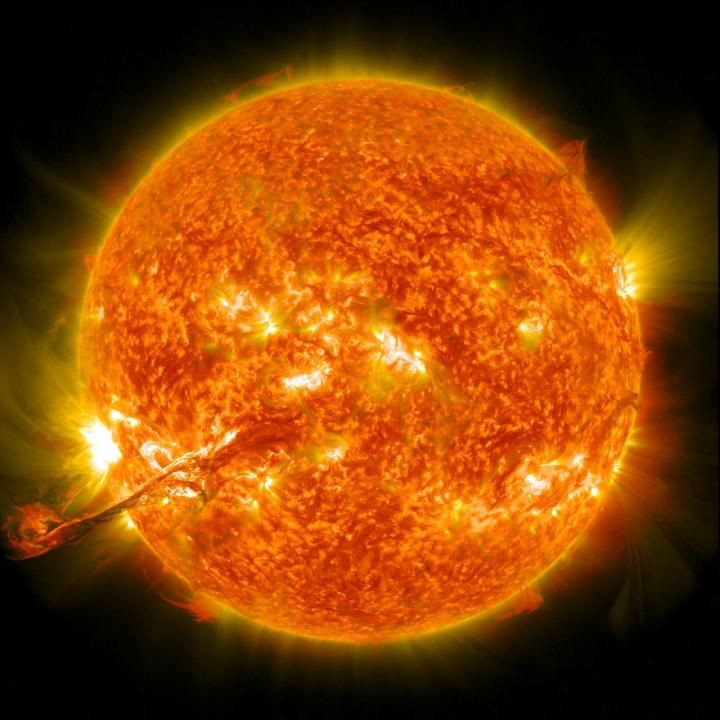Shape Of Large Solar Eruptions Different From Original Assumptions, Study Suggests

Scientists have long known about coronal mass ejections (CMEs) or the eruptions that occur when the sun’s corona — outermost part of its atmosphere — expels a significant amount of plasma and accompanying magnetic field into outer space.
CMEs can carry billions of tons of solar material and are capable of damaging our precious communication satellites and power grids in a matter of few hours. However, forecast and analysis of these ejections, particularly when and how they’ll hit, help scientists keep satellites and other related systems safe.
As part of this effort, they take single point measurements from different spacecraft and get a 30 to 60-minute window before the impact of a CME. This gives sufficient time to take necessary precautions, but is not long enough to make more informed decisions regarding the satellites or power grid in question — like whether they should be powered down temporarily.
This long-standing problem, as researchers from the University of New Hampshire suggested, could be solved by accurately determining the shape of the CME.
That said, in order to gain more insight into the solar phenomenon, the group collected data from two of NASA’s space weather monitoring spacecraft, named ACE and Wind, and analyzed as many as 21 CMEs occurring between 2000 and 2002.
Much to everyone’s surprise, the work revealed CMEs do not look as what scientists have been assuming for the solar models to date.
“Since the late 1970s, coronal mass ejections have been assumed to resemble a large Slinky - one of those spring toys - with both ends anchored at the sun, even when they reach Earth about one to three days after they erupt," Noe Lugaz, research associate professor in the UNH Space Science Center and one of the co-authors of the work, said in a statement. "But our research suggests their shapes are possibly different."
Essentially, the group found CMEs are either four times smaller than previously thought or deformed spring-like structures. The work still needs more observational data, which is why they also left the possibility of a completely different shape.
The researchers made these findings because, during the studied two-year-long period, Wind and ACE operated at different points in space and observed the CME from different perspectives. ACE was in front of our planet, while Wind was on the side, perpendicular to the sun-Earth line.
"Because they are usually so close to one another, very few people compare the data from both Wind and ACE," Lugaz added. "But 15 years ago, they were apart and in the right place for us to go back and notice the difference in measurements, and the differences became larger with increasing separations, making us question the Slinky shape."
These findings indicated the position of future space weather monitoring spacecraft would play a critical role in gaining more data on the exact shape of CMEs and making a better forecast. The ultimate goal, as they say, is to get a margin of at least 24 hours before CME impact.
The study titled, “On the Spatial Coherence of Magnetic Ejecta: Measurements of Coronal Mass Ejections by Multiple Spacecraft Longitudinally Separated by 0.01 au,” was published Aug. 30 in the Astrophysical Journal Letters.
© Copyright IBTimes 2025. All rights reserved.





















